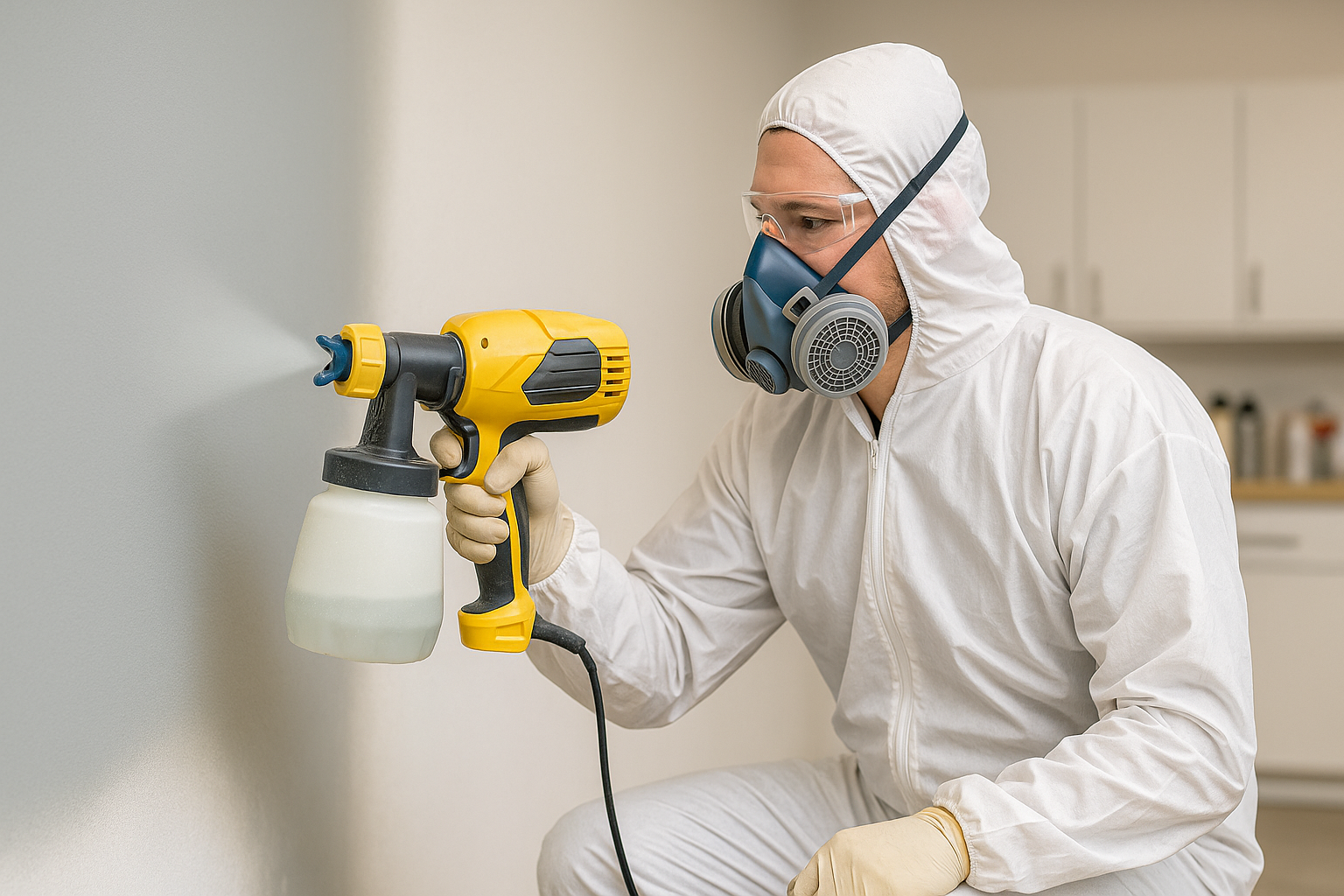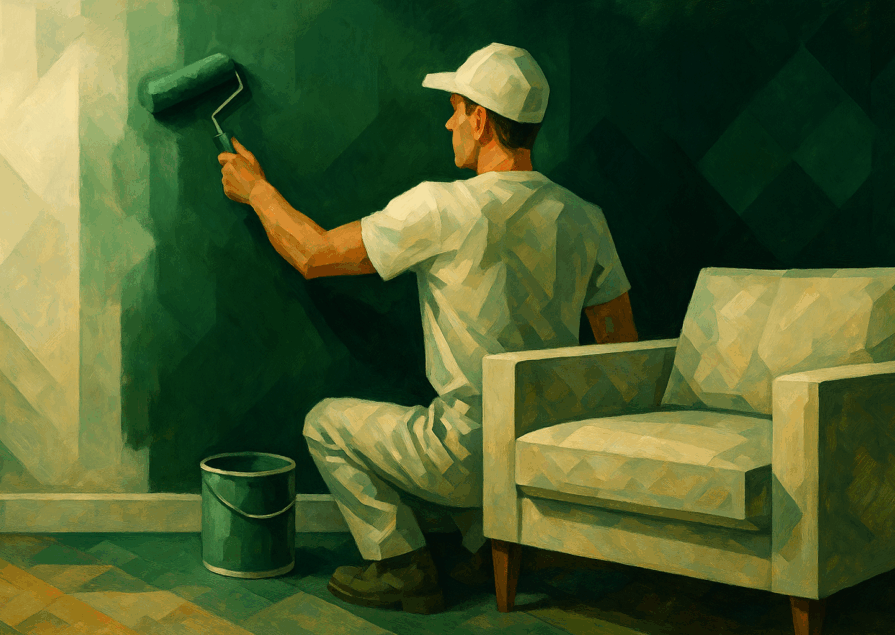Paint sprayers have revolutionized the way we tackle painting projects. Whether you’re a DIY enthusiast or a professional painter, mastering the use of a paint sprayer can significantly enhance your efficiency and the quality of your work. Paint sprayers offer a smooth, even finish and can save you a ton of time compared to traditional brush or roller methods. But to get the best results, you need to understand the different types of sprayers, how to choose the right one, and the steps to prepare and use them properly. In this guide, we’ll cover all that and more.
Types of Paint Sprayers
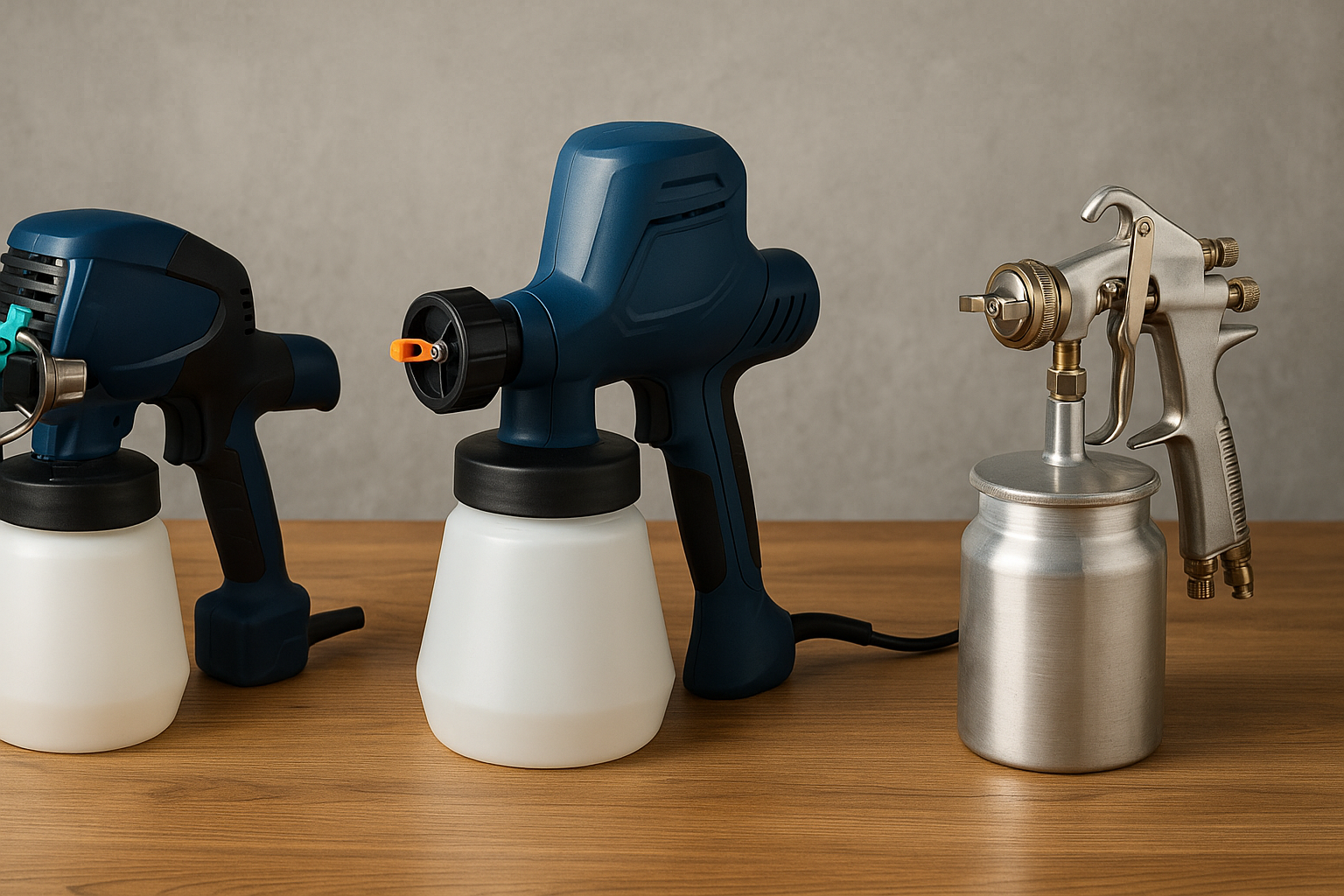
Choosing the right type of paint sprayer is crucial for achieving the desired results. Here, we’ll break down the four main types of paint sprayers and their best use cases.
Airless Paint Sprayers
Airless paint sprayers are a popular choice for large projects due to their speed and efficiency. They work by pumping paint at high pressure through a hose and out of a small hole in the spray gun tip. This creates a fan of tiny droplets that coat the surface evenly.
- Best for: Exterior walls, fences, large decks.
- Pros: Fast, even coverage; less overspray.
- Cons: Requires thorough cleaning; can be pricey.
HVLP Paint Sprayers
High Volume Low Pressure (HVLP) paint sprayers are ideal for detailed work. They use a high volume of air at low pressure to atomize the paint into a fine spray, which minimizes overspray and waste.
Best for: Furniture, cabinets, trim work.
- Pros: Precise application; less paint waste.
- Cons: Slower than airless; requires more thinning of paint.
Compressed Air Sprayers
Compressed air sprayers use an air compressor to deliver paint. These sprayers are less common for large projects but are great for small, detailed jobs.
Best for: Automotive painting, small craft projects.
- Pros: Affordable; easy to use.
- Cons: More overspray; can be messy.
Electrostatic Sprayers
Electrostatic sprayers charge the paint particles, which causes them to be attracted to the surface being painted. This method ensures an even coat with minimal waste.
Best for: Industrial applications, metal surfaces.
- Pros: Even coating; minimal waste.
- Cons: Expensive; requires specialized training.
Understanding the differences between these sprayers will help you choose the best tool for your project, ensuring a professional finish every time.
Choosing the Right Paint Sprayer
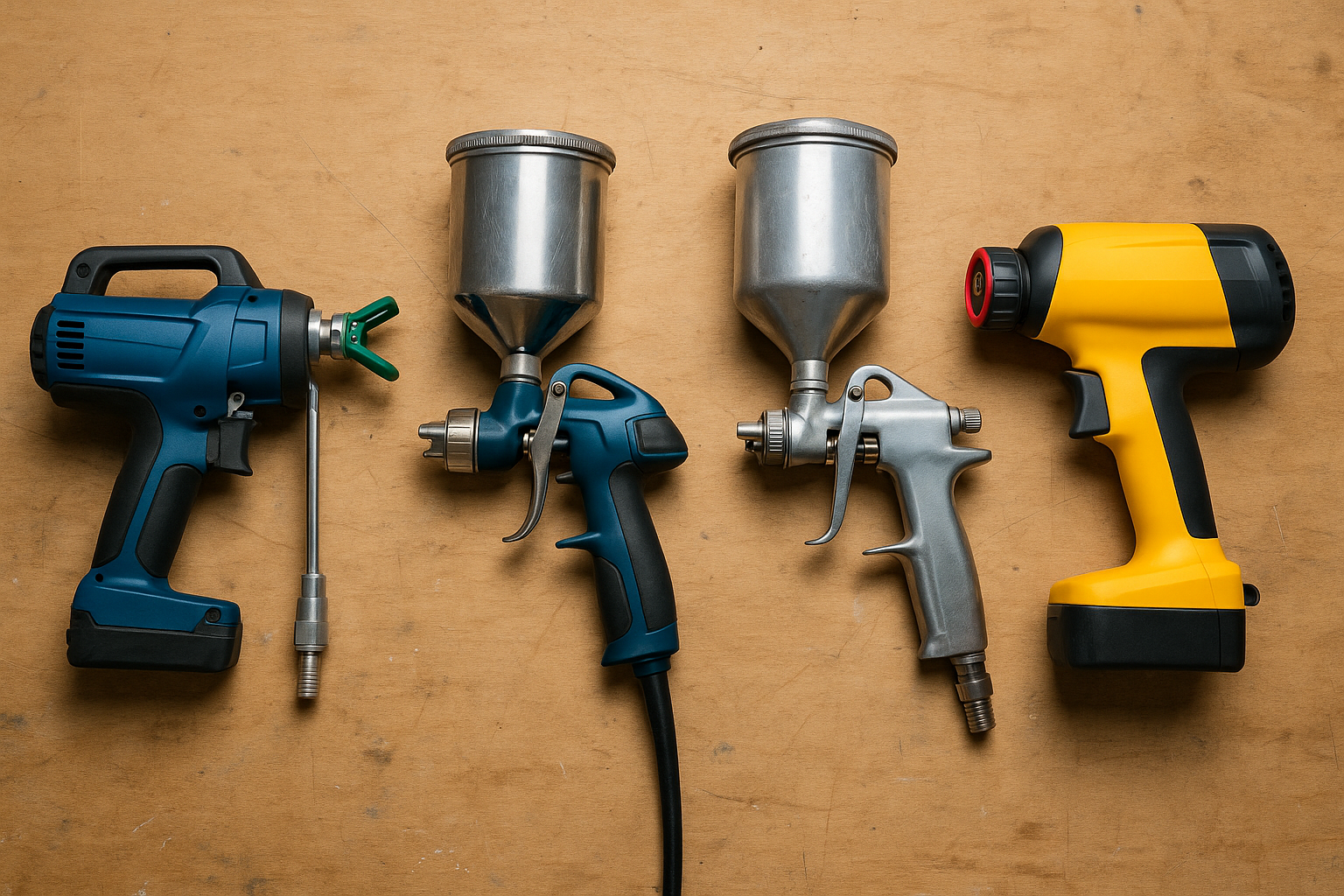
Selecting the perfect paint sprayer involves more than just picking the latest model. Consider the scope of your project, the type of paint you’ll use, and your budget. Here’s a step-by-step guide to help you make an informed decision.
Assessing Project Needs
First, determine the size and nature of your project. Are you painting a large exterior wall or a small piece of furniture? For large, flat surfaces, an airless sprayer might be your best bet due to its speed and broad coverage. For intricate work, like painting furniture or cabinets, an HVLP sprayer offers the precision you need.
Considering Paint Types
Not all paint sprayers handle every type of paint well. Some sprayers require the paint to be thinned before use, while others can handle thicker paints right out of the can. Airless sprayers, for example, can manage thicker paints without thinning, making them ideal for latex and acrylic paints. On the other hand, HVLP sprayers may need the paint to be thinned to avoid clogging.
Budget and Cost Considerations
Paint sprayers can vary significantly in price. While it’s tempting to go for the cheapest option, investing in a high-quality sprayer can save you time and frustration in the long run. Consider not only the upfront cost but also the cost of maintenance and accessories. An airless sprayer might cost more initially, but its durability and efficiency can make it a worthwhile investment for frequent users.
Preparing to Use a Paint Sprayer
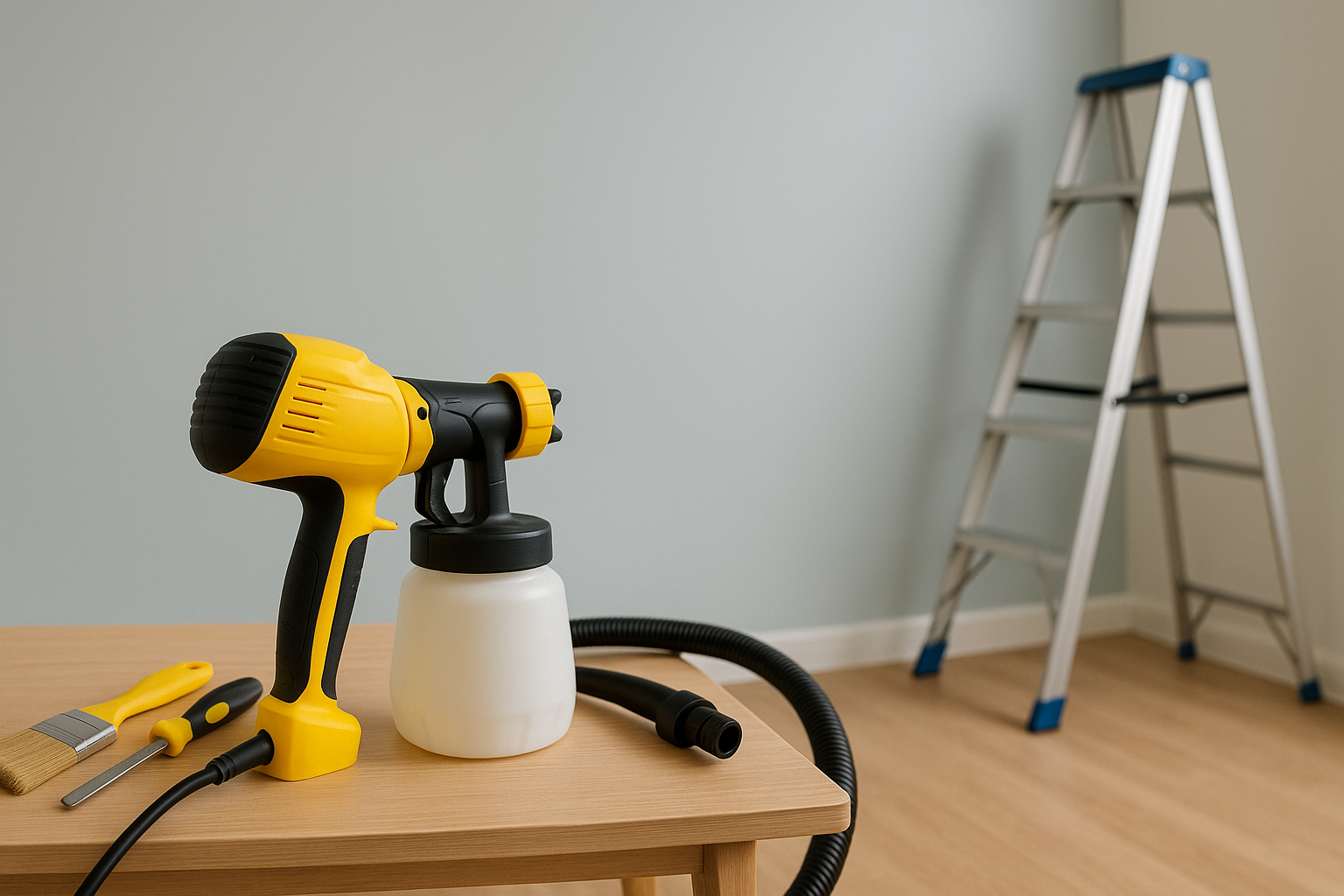
Preparation is key to a successful painting project. Proper setup and safety measures can make the difference between a flawless finish and a messy job.
Setting Up the Work Area
Start by setting up a well-ventilated workspace. If you’re working indoors, ensure that windows are open and fans are running to circulate air. Cover floors, furniture, and any other surfaces that you don’t want painted with drop cloths or plastic sheeting. Use painter’s tape to mask off areas that need protection, such as trim and edges.
Safety Precautions
Safety should always come first when using a paint sprayer. Wear protective gear, including a mask or respirator, safety glasses, and gloves. Make sure you’re familiar with the sprayer’s safety instructions and follow them closely. Keep the work area well-ventilated to avoid inhaling fumes, and never point the sprayer at yourself or others.
Surface Preparation
Before you start spraying, prepare the surface to be painted. Clean it thoroughly to remove dust, dirt, and grease. Sand any rough spots and fill in holes or cracks with putty. Priming the surface is often necessary, especially if you’re painting over a dark colour or a glossy finish. Make sure the surface is completely dry before you begin spraying.
Selecting the Right Nozzle
Choosing the right nozzle is crucial for achieving the desired finish. Nozzles come in various sizes and are designed for different types of paint and surfaces. A smaller nozzle is ideal for detailed work and thin paints, while a larger nozzle is better for broad surfaces and thicker paints. Always refer to the manufacturer’s recommendations for the best results.
Using a Paint Sprayer: Step-by-Step Guide
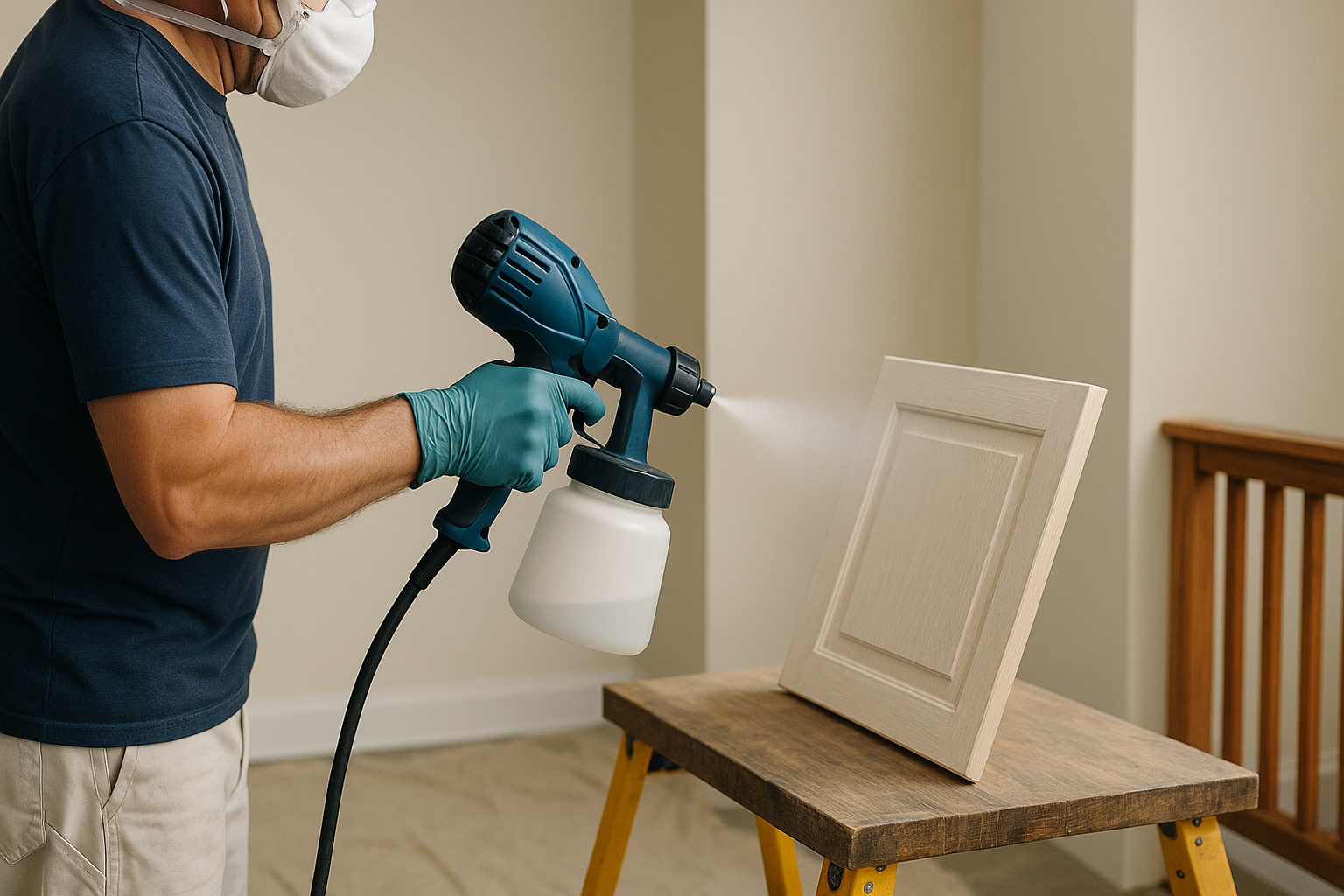
Using a paint sprayer might seem daunting at first, but with a little practice, you’ll be able to achieve professional results. Here’s a step-by-step guide to get you started.
Assembling the Paint Sprayer
Begin by carefully reading the user manual and assembling your paint sprayer according to the instructions. This typically involves attaching the hose, spray gun, and paint container. Make sure all connections are secure to prevent leaks.
Testing the Spray Pattern
Before you start on your project, test the spray pattern on a piece of cardboard or scrap material. Adjust the pressure and spray settings until you achieve a consistent, even pattern. This step is crucial for avoiding surprises once you start painting your actual surface.
Techniques for an Even Finish
Hold the spray gun about 10-12 inches from the surface and keep it moving in a steady, overlapping motion. Start moving the gun before you pull the trigger and release the trigger before you stop moving the gun to avoid uneven spots. Practice on a scrap piece to get comfortable with the motion.
Managing Overspray
Overspray can be a common issue with paint sprayers, but there are ways to minimize it. Use a lower pressure setting and a smaller nozzle for detailed work. If you’re working outdoors, try to spray on a calm day to avoid the wind carrying the paint away from the intended surface. Indoors, use masking tape and plastic sheeting to protect adjacent areas.
With these tips and techniques, you’ll be well on your way to mastering the use of a paint sprayer. Whether you’re painting a room, a piece of furniture, or an outdoor fence, the right preparation and execution will ensure a beautiful, professional finish.
Benefits of Using Paint Sprayers
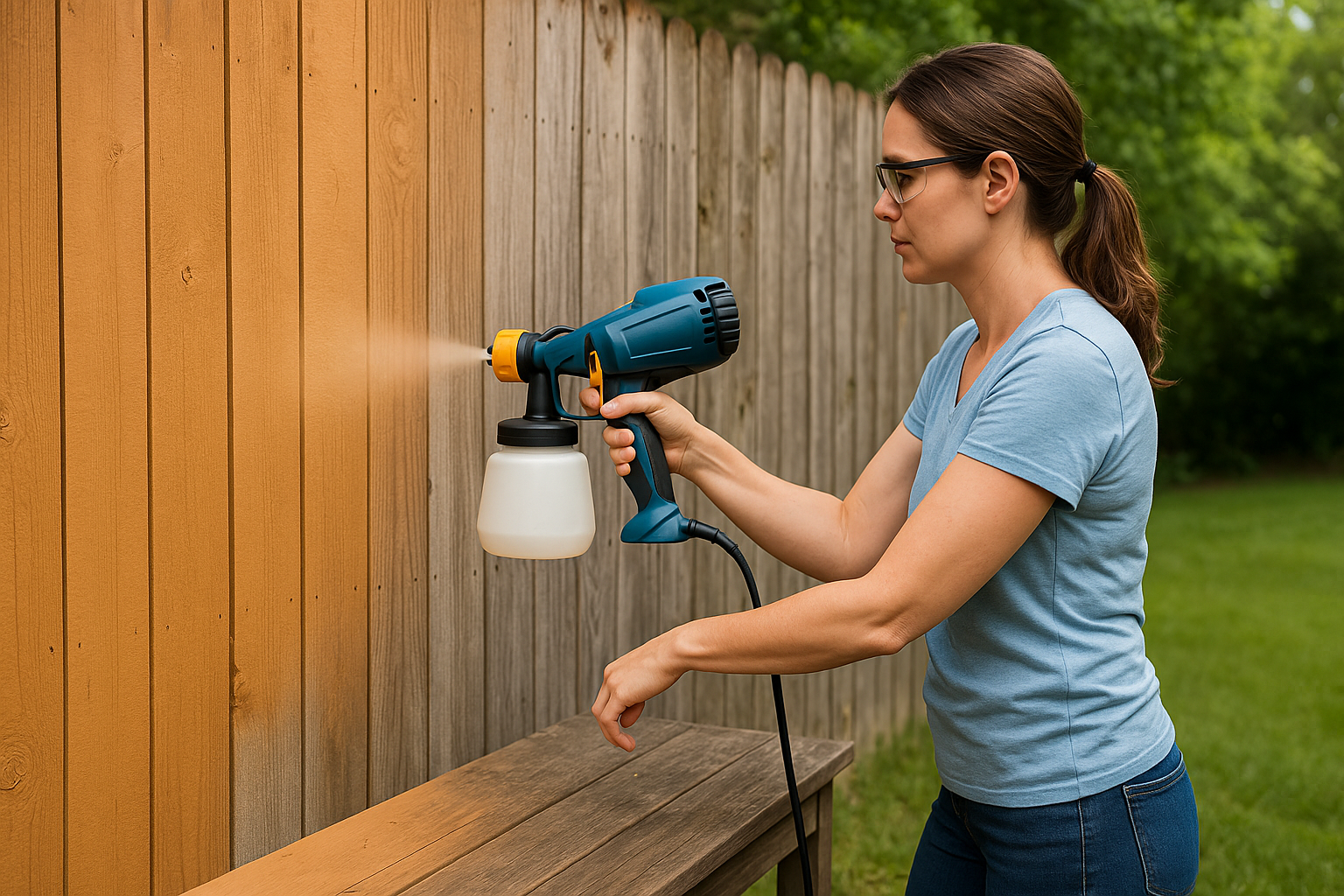
Using a paint sprayer comes with several advantages that make it a preferred tool for many painting projects. Here are some key benefits.
Time Efficiency
Paint sprayers can significantly speed up the painting process. Instead of spending hours or even days with brushes and rollers, you can complete a large area in a fraction of the time with a sprayer.
- Coverage: A paint sprayer can cover a large surface area quickly and evenly, reducing the need for multiple coats.
- Speed: The high-pressure application means you can finish projects faster, making it ideal for professionals with tight deadlines.
Superior Finish Quality
A paint sprayer can deliver a smooth, even coat that’s difficult to achieve with traditional methods.
- No Brush Marks: Unlike brushes and rollers, paint sprayers don’t leave behind streaks or brush marks, resulting in a flawless finish.
- Even Coverage: Sprayers apply a consistent layer of paint, ensuring uniform coverage across all surfaces, including edges and corners.
Versatility in Applications
Paint sprayers are versatile tools that can handle a variety of projects, from small indoor tasks to large outdoor jobs.
- Multiple Surfaces: They can be used on walls, ceilings, furniture, decks, fences, and even intricate details.
- Various Paint Types: Sprayers can handle different types of paints, stains, and finishes, making them adaptable to many projects.
Using a paint sprayer not only saves time but also enhances the quality and efficiency of your painting projects, making it a worthwhile investment for both DIY enthusiasts and professionals.
Conclusion
Mastering the use of a paint sprayer can transform the way you approach painting projects. By choosing the right type of sprayer, preparing your workspace and surfaces properly, and using the correct techniques, you can achieve a professional finish with ease. Regular maintenance and troubleshooting will ensure your sprayer remains in good working condition for years to come. Embrace these best practices, and you’ll enjoy faster, more efficient, and higher-quality painting results.
FAQs
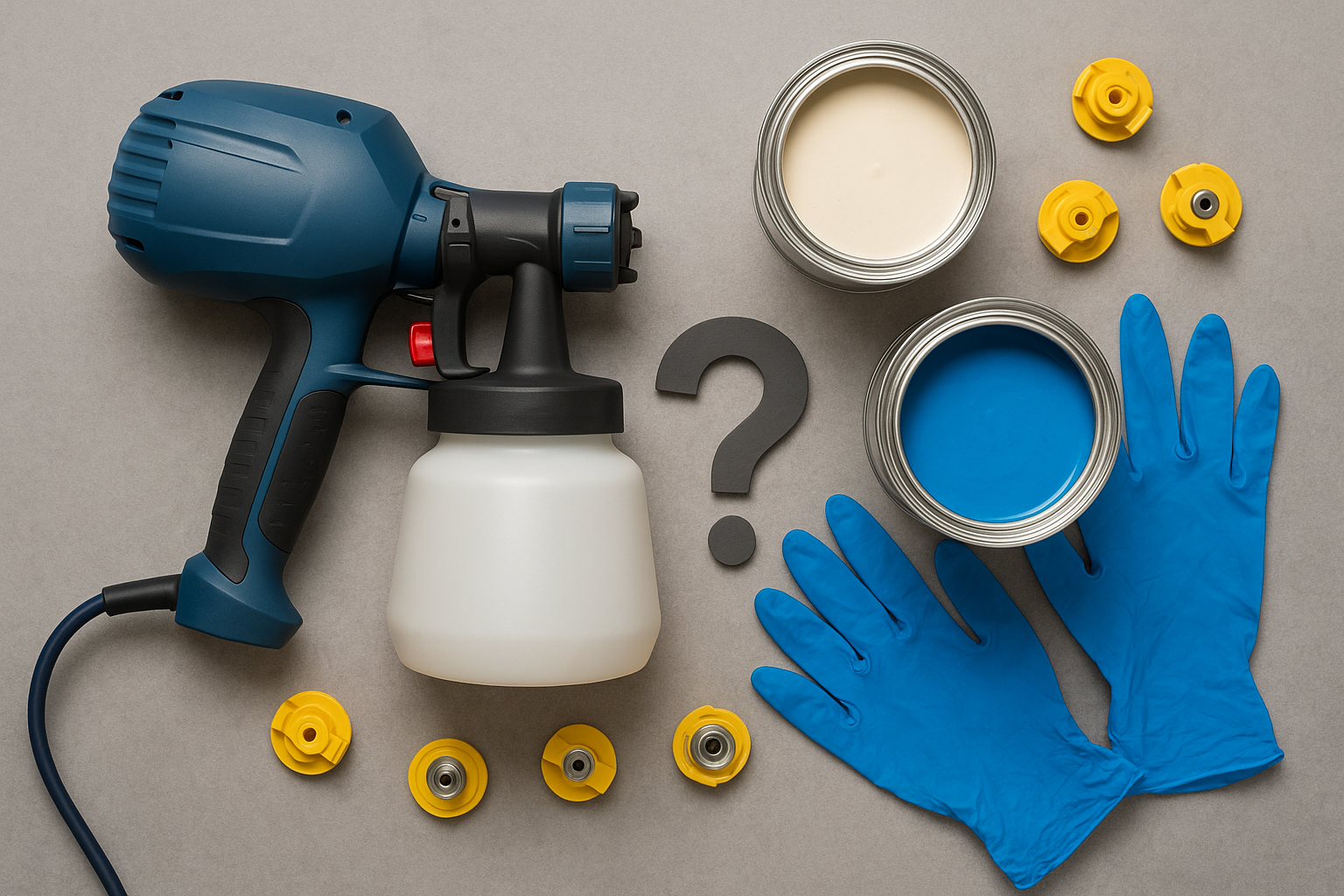
- How do I choose the right nozzle for my paint sprayer?
- Selecting the right nozzle depends on the type of paint and the surface you’re working on. Refer to the manufacturer’s recommendations for the best results.
- Can I use any type of paint with a sprayer?
- Not all paint types are suitable for all sprayers. Check the sprayer’s manual to see which types of paint are compatible and if thinning is necessary.
- How often should I clean my paint sprayer?
- Clean your paint sprayer thoroughly after each use to prevent clogs and maintain performance. Regular cleaning ensures longevity and efficiency.
- What safety gear do I need when using a paint sprayer?
- Always wear a mask or respirator, safety glasses, and gloves to protect yourself from fumes and paint particles. Ensure your workspace is well-ventilated.
- How can I prevent paint from clogging the sprayer?
- Properly clean the sprayer after each use, strain the paint before use, and use the recommended type of paint for your sprayer to avoid clogs.
